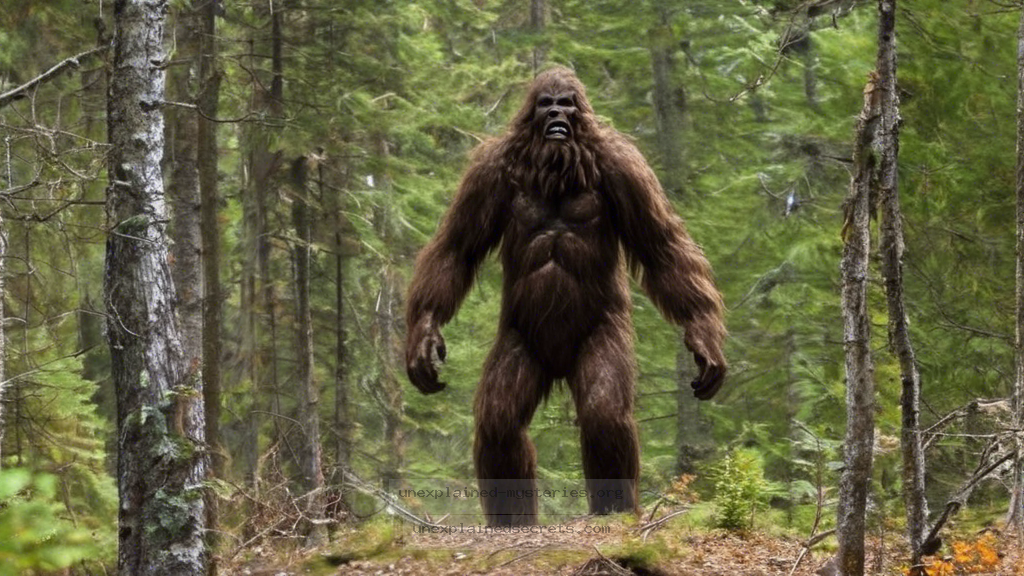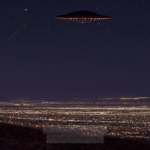What Do the Most Compelling Bigfoot Sightings Tell Us About Its Existence?
What Do the Most Compelling Bigfoot Sightings Tell Us About Its Existence?
The existence of Bigfoot, a mysterious creature often described as a large, hairy, ape-like being, has fascinated people for decades. With numerous sightings reported across North America and beyond, the question of whether Bigfoot is real or merely a product of folklore and imagination remains a hot topic. This blog post dives deep into the most compelling sightings of Bigfoot and what they reveal about the possibility of its existence, examining historical context, core concepts, and ongoing research into this elusive creature.
The Historical Context of Bigfoot Sightings
Bigfoot sightings date back centuries, with indigenous cultures in North America documenting stories of large, hairy beings long before modern-day encounters. Native American tribes, such as the Salish and the Sioux, refer to these creatures with names like “Sasquatch” and “Wendigo,” which translate to “wild man” or “hairy giant.” These historical accounts highlight not only the presence of the creature in folklore but also the cultural significance it holds.
In the 1950s, the modern Bigfoot phenomenon gained traction, primarily due to the famous 1958 Bluff Creek footprints discovered by Jerry Crew. This event prompted widespread media coverage and set the stage for future investigations and claims of sightings. The 1967 Patterson-Gimlin film, which allegedly captured Bigfoot in a remote area of Northern California, remains one of the most scrutinized pieces of evidence in the cryptozoological community. The film has been analyzed for decades, with experts arguing both for and against its authenticity.
Did You Know? The term “Sasquatch” is derived from the Salish word “sásq’ets,” which translates to “wild man.” This reflects the creature’s deep roots in Native American culture and lore.
Core Concepts: What Makes a Bigfoot Sighting Compelling?
Compelling Bigfoot sightings typically share certain characteristics that contribute to their credibility. These include:
- Witness Credibility: Eyewitnesses with no prior interest in cryptozoology often lend credibility to sightings.
- Physical Evidence: Footprints, hair samples, and even fecal matter can bolster claims of a sighting.
- Environmental Context: Reports from remote, forested areas where large animals could conceivably remain undetected add to the mystery.
- Consistency Across Reports: Similar descriptions of the creature across different sightings can strengthen the case for its existence.
For instance, the 2006 sighting by a group of hikers in the Mount St. Helens area of Washington State involved multiple witnesses, including a park ranger. They described a large, bipedal creature moving through the forest, and their consistent accounts drew significant interest from researchers.
Notable Bigfoot Sightings Through the Years
Numerous sightings have captured the public’s imagination. Here are a few notable examples:
| Date | Location | Key Details |
|---|---|---|
| 1967 | Bluff Creek, California | Patterson-Gimlin film shows a large, hairy figure walking through the woods. |
| 1997 | New York State | Multiple witnesses report seeing a large creature near a lake, accompanied by strange sounds. |
| 2006 | Mount St. Helens, Washington | A group of hikers, including a park ranger, describes a sighting of a tall, bipedal creature. |
| 2012 | North Carolina | A hunter captures video footage of a massive creature crossing a road, which remains controversial. |
Practical Evidence: What Have We Found?
Evidence supporting the existence of Bigfoot is a mix of anecdotal reports, physical evidence, and technological advancements. Footprints, often measuring up to 24 inches in length, have been found in various locations, with casts created from these prints providing tangible proof for some enthusiasts. However, skeptics argue that many of these prints can be fabricated or misidentified.
Hair samples purported to belong to Bigfoot have also been analyzed, but results often lead to inconclusive findings or match known species, such as bears. In 2019, a study published in the journal “Proceedings of the Royal Society B” examined various hair samples from alleged Bigfoot sites. The study concluded that most samples could be attributed to known animals, but a small percentage remained unidentified, igniting further debate about the creature’s existence.
Insight: While physical evidence such as footprints and hair samples can be intriguing, they often lack the rigor needed to confirm Bigfoot’s existence. Peer-reviewed research is essential in evaluating claims.
Alternative Perspectives: Skepticism and Scientific Approaches
Despite compelling sightings and anecdotal evidence, skepticism remains high in the scientific community. Many experts argue that the lack of definitive proof, such as a body or verifiable video evidence, makes the existence of Bigfoot unlikely. Some researchers suggest that the sightings could be attributed to misidentifications of known animals, such as bears, or even hoaxes designed to exploit public interest.
Additionally, the psychological phenomenon known as pareidolia, where the human brain interprets vague stimuli as recognizable patterns, can lead to mistaken sightings. This explains why some people might believe they’ve seen a Bigfoot when, in reality, they have encountered shadows or other natural occurrences.
Common Misconceptions About Bigfoot
Several misconceptions surround Bigfoot, often perpetuated by media portrayals and anecdotal stories. Some of these include:
- Bigfoot is a single creature: Many believe there is only one Bigfoot. However, proponents argue that if the creature exists, there could be multiple individuals or even a breeding population.
- All sightings are hoaxes: While many reports can be dismissed as fabrications, numerous credible witnesses have reported sightings, suggesting that not all claims are false.
- Bigfoot is a myth: Many cultures have documented similar creatures, indicating that the idea of a large, hairy humanoid is more than just a modern legend.
Warning: It’s essential to approach Bigfoot research with an open mind while maintaining a critical eye. Personal biases can cloud judgment on both sides of the debate.
Best Practices for Investigating Bigfoot
If you’re interested in investigating Bigfoot sightings, following some best practices can enhance your research:
- Document Everything: Always record detailed notes about the location, time, weather conditions, and any witnesses involved.
- Use Technology: Utilize cameras, audio recorders, and night vision equipment to capture potential evidence.
- Engage with the Community: Connect with other researchers and enthusiasts to share findings and experiences.
- Be Respectful of Nature: Ensure that your investigations do not disturb local wildlife or their habitats.
Future Developments in Bigfoot Research
Ongoing research into Bigfoot continues to evolve, with advancements in technology playing a critical role. For example, DNA analysis techniques are becoming increasingly sophisticated, allowing for more accurate identification of hair and biological samples. Citizen science initiatives, where enthusiasts work alongside researchers, are also gaining traction, providing valuable data and insights.
Moreover, the rise of social media platforms has facilitated the sharing of sightings and evidence, creating an engaged community of believers and skeptics alike. This digital age allows for real-time analysis and discussion of new findings, ensuring that the mystery of Bigfoot remains alive and relevant.
Conclusion
The question of Bigfoot’s existence continues to intrigue both believers and skeptics. Compelling sightings, historical context, and ongoing research all contribute to the discourse surrounding this enigmatic creature. While definitive proof remains elusive, the rich tapestry of eyewitness accounts, cultural significance, and scientific inquiry fosters an enduring fascination with Bigfoot. Whether you view it as a myth or a reality, the allure of the unknown will likely keep the search for Bigfoot alive for generations to come.
Other Articles
What Really Happened During the Phoenix Lights Incident of 1997?
Recent Posts
- What Happened to Flight MH370? The Conspiracy Theories That Still Haunt Us
- What Secrets Lurk Within the Walls of the Infamous Trans-Allegheny Lunatic Asylum?
- What Evidence Supports the Existence of Bigfoot in the Pacific Northwest?
- What Happened to the Indus Valley Civilization? Unraveling the Mysteries of Ancient Urban Life
- Can Telepathy Be Scientifically Proven Through Laboratory Evidence?







